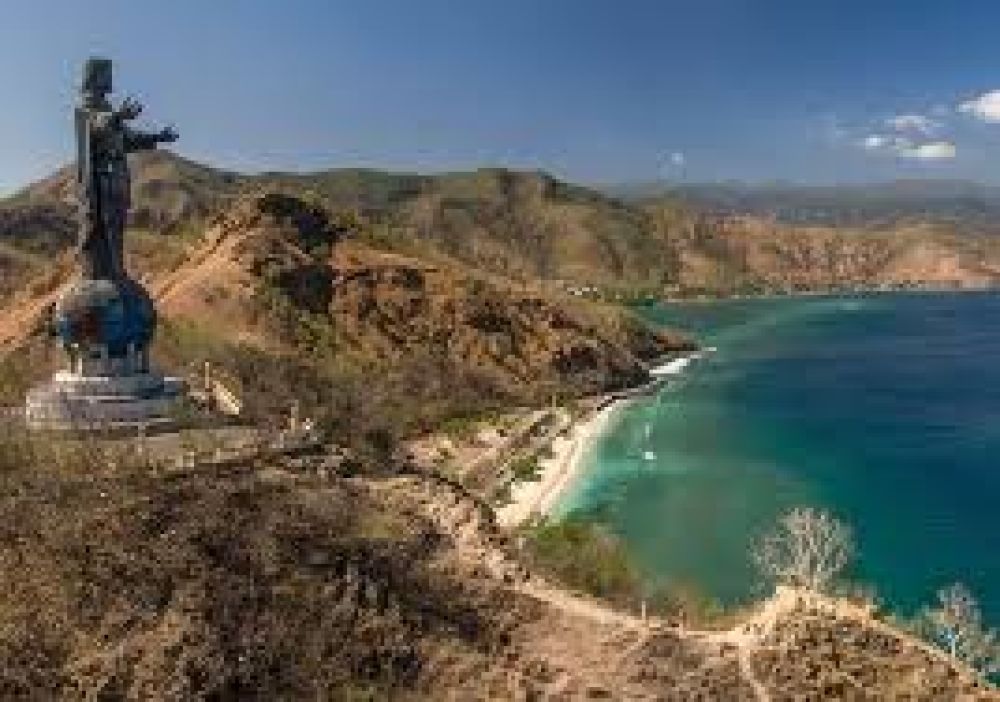

Perched atop a hill with panoramic views of the city and sea, the Cristo Rei Statue of Dili is a renowned symbol of peace and a notable attraction in Timor-Leste. Standing at approximately 27 meters tall, including its pedestal, this towering figure represents Christ the King and has become an essential part of the spiritual and cultural history of this young nation.
The Cristo Rei Statue was inaugurated on October 12, 1996, as a gift from the government of Indonesia during their occupation of Timor-Leste, which lasted from 1975 to 1999. Intended as a symbol of solidarity, the statue was met with mixed feelings by the Timorese people, many of whom saw it as a reminder of Indonesia's controversial presence in their country.
Despite its contentious origins, since Timor-Leste's independence on May 20, 2002, the Cristo Rei has adopted new significance as a beacon of hope and reconciliation for the Timorese people. It stands as a significant religious site, especially during Easter celebrations, where pilgrimages are made by the local Catholic community, representing a major segment of the population.
Tourism in Timor-Leste is in its nascent stages. The Cristo Rei Statue quickly became one of the focal points of tourism in the capital city of Dili. Visitors trek up the 500+ steps, passing stations of the cross depicting scenes of Jesus' journey to his crucifixion. This hike offers not only a spiritual journey for some but also a chance to capture breathtaking views of the surrounding landscape.
The statue itself is an impressive sight, drawing comparisons to the famous Christ the Redeemer statue in Rio de Janeiro, Brazil. The coastal area below boasts beautiful sandy beaches which are popular for swimming, snorkeling, and enjoying the tropical climate.
In recent years, Timor-Leste has been focusing on sustainable tourism to help protect its unique environment and cultural heritage. Eco-tourism is on the rise, with initiatives to promote community-based tourism that allows visitors to engage with local traditions and ways of life. Dive tourism is also growing, as the country is known for its pristine coral reefs and rich marine biodiversity.
The country has also been investing in infrastructure and facilities to improve the experience for tourists. Efforts to streamline visa processes and improve transportation within the country are underway. Despite these advancements, Timor-Leste still offers an off-the-beaten-path experience for travelers looking for a destination that blends natural beauty with a rich cultural tapestry.
The Cristo Rei of Dili remains a symbol of the country's tumultuous past and its journey towards peace and reconciliation. As tourism continues to develop, the statue stands tall as a testament to the resilience and hope of the Timorese people.